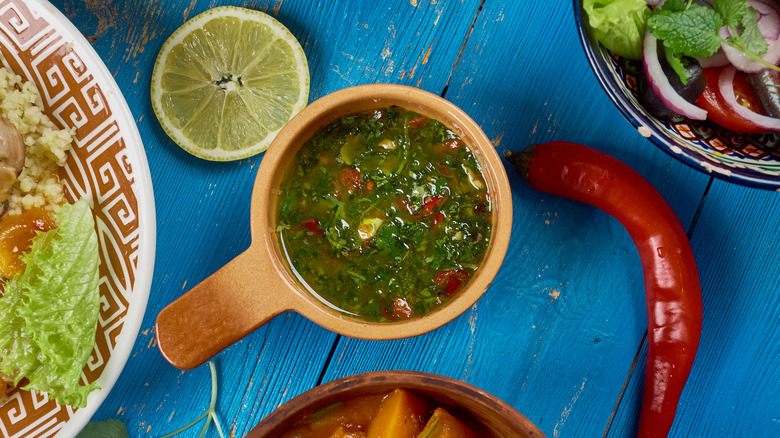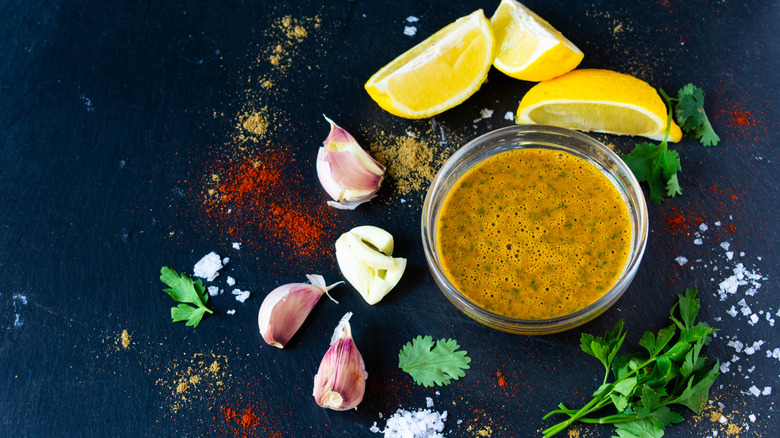What Is Chermoula And How Do You Use It?
With a flavor profile that tastes almost like a mix between pesto, chimichurri, and salsa verde, chermoula is a piquant, spicy, cilantro-forward green sauce that hails from Northern Africa.
Essentially a type of relish, it sometimes also goes by charmoula. It comes from the Arabic word chermel, which means "to rub" or marinate, according to Simply Recipes. The Epicentre notes that the punchy flavors of cumin and paprika are balanced by the herbaceous qualities of parsley and cilantro. It also often includes garlic, chili, lemon, oil, and a myriad of other spices, while helps to further balance the emerald sauce. It is bright and herbal, often used a sauce for proteins or as a marinade. It is most often served with fish. It originated in Morocco, according to Simply Recipes, but variations of it are also enjoyed throughout Algeria, Tunisia, and Egypt. Taste of Maroc calls it "the emblematic marinade of Maghreb cuisine." Traditionally, it was made with mortar and pestle, but it often made in a blender or food processor now. It's naturally vegan.
How do you eat chermoula?
Wise Geek notes that two popular dishes using chermoula are mqalli — a Moroccan fish tagine — and stuffed, fried sardines. It is also often served with chicken, lamb, or eggplant. It can be mixed with butter, yogurt, or mayo, used as a super-bright salad dressing, or tossed with roasted, grilled, or sautéed veggies. Many stir it into soups, various grain dishes such as rice or couscous, or even top crusty bread with spoonfuls of chermoula.
There are any variations that can subtly alter the flavor of the pungent sauce. Sometimes flavors like ras el hanout, cinnamon, or earthier, smokier spices are included. Add harissa for a spicy finish, or try out other herbs for a differing flavor profile, such as herbs. Preserved lemons are also delicious (via Simply Recipes). Try a potato salad tossed with chermoula; it automatically brightens anything it's added to.
Chermoula is also super convenient because you can make it in advance. Some stores sell a rub or dried chermoula, but they pale in comparison to homemade. The hue changes exponentially dependent on the ingredients. Often green, it can veer to red or yellow, dependent on what's included, such as harissa or even turmeric. Clearly, chermoula is very versatile and easily adaptable.

